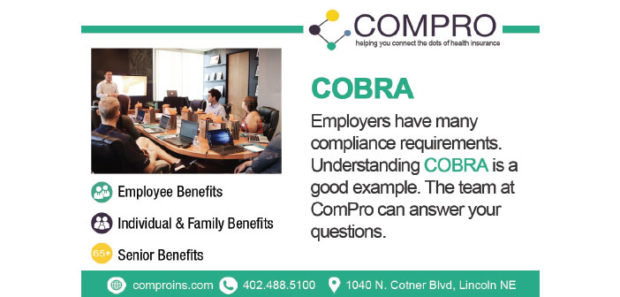Understanding COBRA
by Kayla Northrup, Senior Account Manager
COBRA is familiar to many but misunderstood by most. Whether you are an employer or employee, it is important to understand your rights and responsibilities related to coverage continuation. Let’s first walk through what COBRA is, who it applies to, and how it works.
What is COBRA? — COBRA is a federal law that requires employers with 20+ employees who offer health benefits to allow individuals to continue coverage when it is otherwise scheduled to end. Some examples of COBRA qualifying events are termination of employment or reduction in hours to part-time level. It’s commonly thought that all employers who offer health benefits are subject to COBRA. Not true…20 employees is the magic number. There is a similar program for employers with less than 20 employees.
Who does COBRA apply to? — COBRA applies to anyone who was covered on the group health plan on the day prior to coverage termination. This includes employees, spouses, and children. Each person has their own COBRA election rights. COBRA enrollment does not have to match prior enrollment. A spouse or child may elect COBRA while the employee does not.
How does it work? — COBRA eligible individuals have 60 days to return election paperwork. Coverage will be effective on the day after coverage is terminated so that there is not a gap in coverage. COBRA premium may seem high. This is because the individual is now paying the full cost of coverage without the employer contribution. Electing COBRA is electing to remain on the employer plan. COBRA is not a totally separate benefit plan. It is choosing to continue prior coverage and prior premiums, though now fully funded by the individual. COBRA can last for 18, 29, or 36 months, depending on the event which caused coverage termination. Employers bear the responsibility of notifying individuals of their COBRA eligibility. There are rules regarding when the notification must take place and allowable methods of communication. Non-compliance can bring significant fines. There are softwares and COBRA administrators that can help ease the burden to employers. Employers should either take the time to become familiar with COBRA/State Continuation or outsource it to protect the company.
As previously mentioned, there is a small employer version of COBRA called State Continuation. While COBRA is federally mandated, State Continuation varies from state to state. State Continuation applies to employers with less than 20 employees. It isn’t nearly as broad as COBRA. Involuntary termination is the only event that triggers State Continuation eligibility. An employee who voluntarily quits is not eligible for State Continuation. State Continuation coverage can last up to six months. Self funded and Level funded plans generally are not subject to State Continuation.


